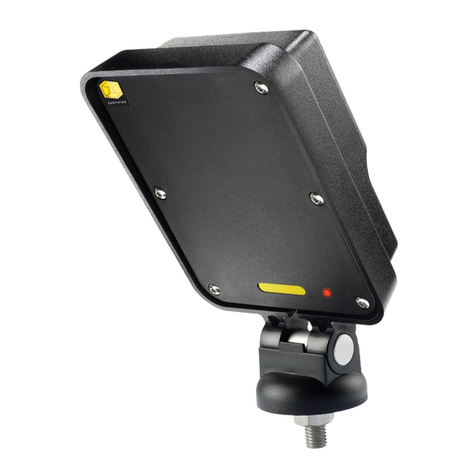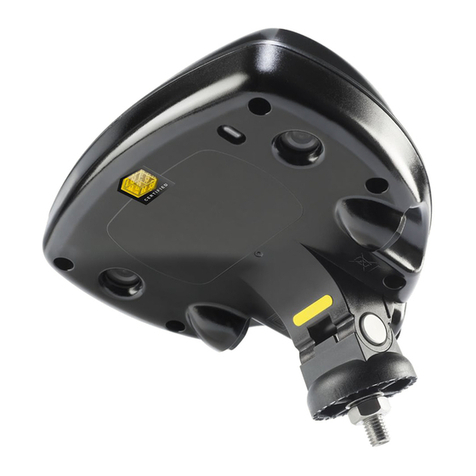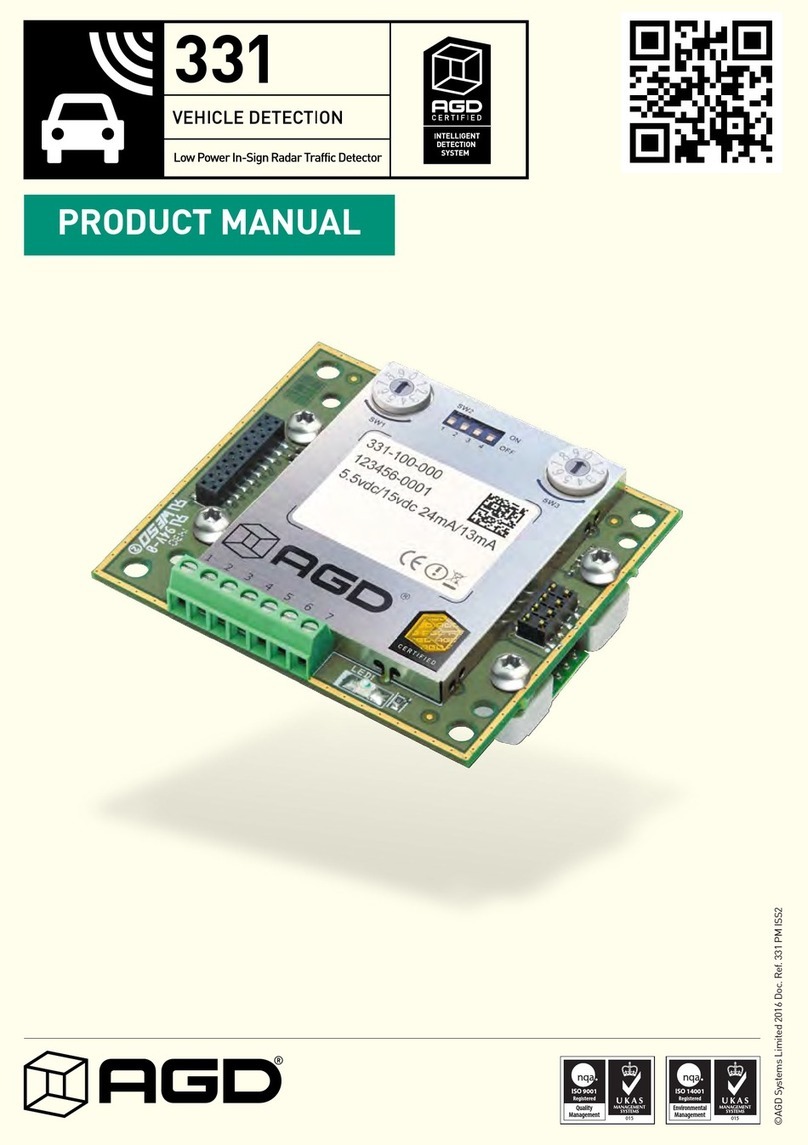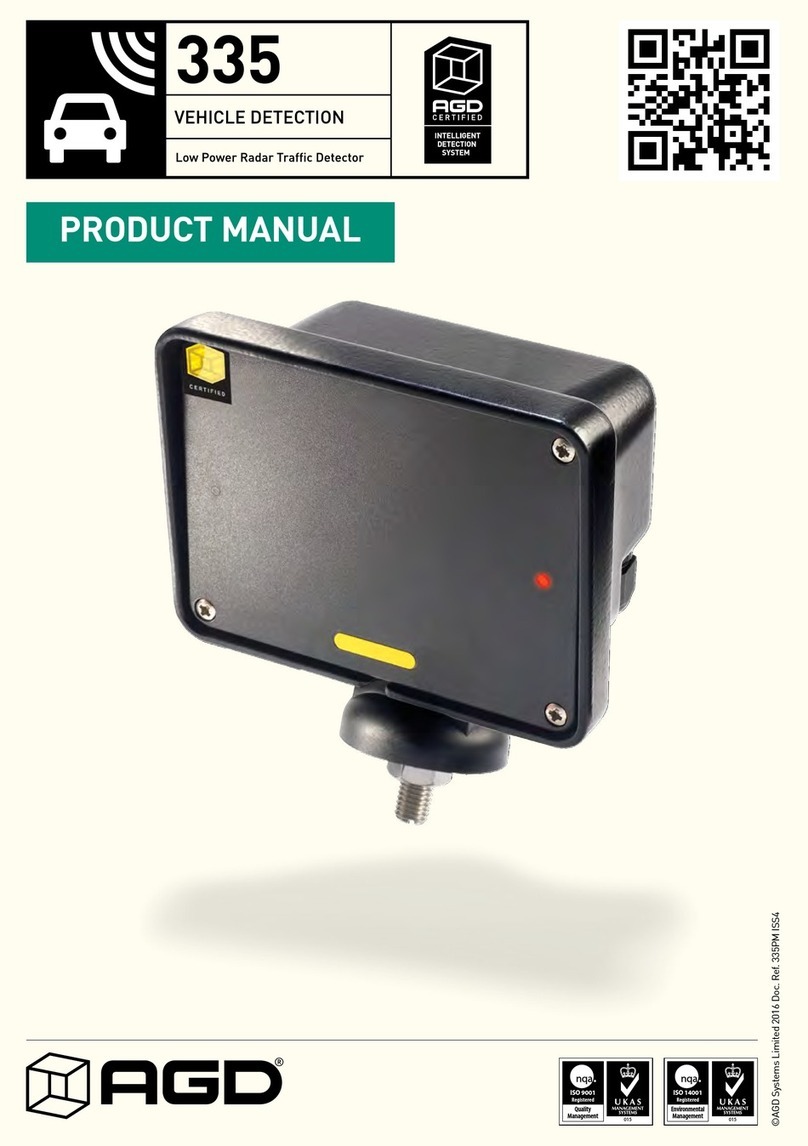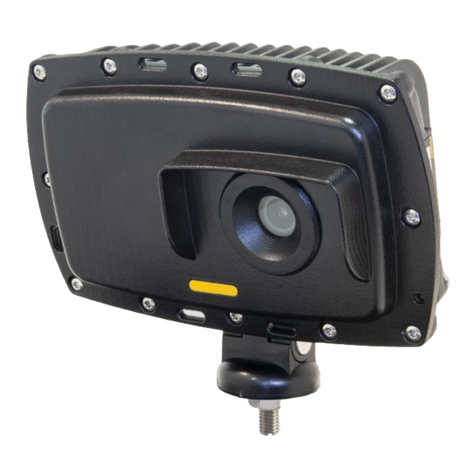
10
AGD 331
IN-SIGN RADAR TRAFFIC DETECTOR
AGD 331
IN-SIGN RADAR TRAFFIC DETECTOR
AGD 331
IN-SIGN RADAR TRAFFIC DETECTOR
AGD 331
IN-SIGN RADAR TRAFFIC DETECTOR
Radar Commands and Configuration
COMMAND LIST
Command Suffixes Description Default Lower
Limit
Upper
Limit
Comments
AGD -Shows detector type & version
information
---Reports radar model and
version information
*BAUD ?
=
^
$
Baud rate for RS232 115200 9600 115200 9600 or 115200
*note - the customers selected
baud rate is always reported at
115200 on start up
*COUNTDIR ?
=
^
$
Enquire / set the direction of vehicle count A--A = Advancing
R = Receding
B = Bi-Directional
*DEFAULTS !
$
Set all radar parameters to their default
values
----
*DEFAULTSTATS !
$
Resets the number of target detections as
reported by *STATUS? command
----
*DFR ?
=
^
Dynamic frame rate.
When set to a value >1, if the radar does
not detect a potential target it will not
transmit again for the set number of
frames
2020 This is used to further reduce
power consumption. See
page 15.
*HELP ?
$
!
Displays all user commands ----
*HOLDTIME ?
=
^
$
The time the switched output is held on
after the target has left the detection zone
setting global to both outputs
500 10 2000 Values are in milliseconds
*LED ?
=
^
$
Enquire / set the operation of the LED on
the rear of the unit.
ON OFF ON *LED=0 turns off LED
*LED=1 turns on LED and
mimics *OUT1 on LED
Off will help lower the current
consumption
*MM ?
^
$
=
Targets reporting method
1 = Fastest target
2 = Oldest valid tracked target
3 = Average Speed of oldest tracked target
213-
*MONITOR ?
=
^
$
Switched output 1 will produce a constant
demand if no target is seen for the
duration of the monitor time
0072 Hours where 0 is off
*MS ?
=
^
$
Message type
02 = dd(10fps)
06 = *Sddd (10 fps)
09 = *Sddd (5fps)
12 = ddd,D Where D is A for advancing and
R is for receding
12 02 12 -






